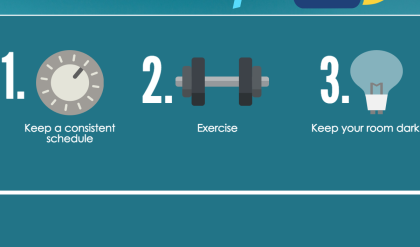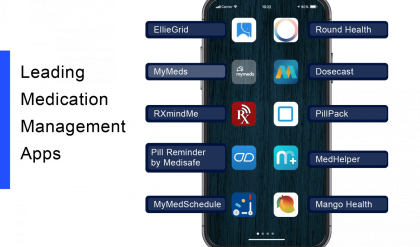
From Frazzled to Focused: How to Prioritize Self-Care Without Sacrificing Productivity
The modern world thrives on hustle culture, a relentless pursuit of achievement that often leaves us feeling depleted and overwhelmed. We’re told to “grind,” to “hustle harder,” but what happens when the well runs dry? The truth is, sustainable productivity isn’t about burning the candle at both ends; it’s about nurturing the flame. This article explores the often-overlooked secret to peak performance: prioritizing self-care without sacrificing your goals.
The Myth of the Superhuman
Society often paints a picture of the superhuman – the individual who effortlessly balances a demanding career, thriving social life, and impeccable physical condition. This is a myth. We are not machines; we are humans with limitations. Ignoring our needs in the name of productivity only leads to burnout, decreased performance, and ultimately, a diminished quality of life. True success is about sustainable effort, not unsustainable striving.
Reframing Self-Care: It’s Not Selfish, It’s Strategic
Many struggle to prioritize self-care, believing it’s a luxury they can’t afford, a frivolous indulgence that detracts from their responsibilities. This is a harmful misconception. Self-care isn’t about elaborate spa days or expensive retreats (though those can certainly be enjoyable). It’s about making conscious choices that nourish your physical, mental, and emotional well-being, thus enhancing your ability to perform at your best.
The Productivity-Self-Care Synergy
Think of self-care as the fuel that powers your productivity engine. Just as a car needs gas to run, you need self-care to function optimally. Neglecting this vital element leads to inefficiency, errors, and decreased overall output. By investing in your well-being, you’re actually investing in your productivity.
Practical Strategies for Integrating Self-Care into Your Routine
The key is integration, not segregation. Don’t think of self-care as a separate block of time; weave it into the fabric of your daily life.
1. Mindful Movement:
Incorporate short bursts of movement throughout your day. A 10-minute walk during your lunch break, a quick yoga session before bed, or simply stretching at your desk can significantly improve your energy levels and focus.
2. Nourishing Nutrition:
Fuel your body with wholesome foods. Avoid excessive sugar and processed foods, opting instead for nutrient-rich options that provide sustained energy. Preparing meals in advance can make healthy eating more manageable.
3. Digital Detox:
Set boundaries with technology. Schedule regular breaks from screens, and create a “digital curfew” in the evenings to promote better sleep and reduce stress.
4. Mindful Moments:
Practice mindfulness techniques like meditation or deep breathing exercises to reduce stress and improve focus. Even a few minutes a day can make a difference.
5. Prioritize Sleep:
Aim for 7-9 hours of quality sleep each night. Create a relaxing bedtime routine to signal your body it’s time to rest. A well-rested mind is a productive mind.
6. Connect with Nature:
Spend time outdoors, even if it’s just for a few minutes. Nature has a calming effect and can help reduce stress and improve mood.
The Power of Prioritization: Time Blocking for Self-Care and Productivity
Effective time management is crucial. Use time blocking to schedule both work tasks and self-care activities. Treat self-care appointments as non-negotiable.
| Time | Activity | Category |
|---|---|---|
| 7:00 AM – 8:00 AM | Morning Yoga & Meditation | Self-Care |
| 8:00 AM – 12:00 PM | Project A: Client Presentations | Work |
| 12:00 PM – 1:00 PM | Lunch & Walk | Self-Care |
| 1:00 PM – 5:00 PM | Project B: Report Writing | Work |
| 5:00 PM – 6:00 PM | Dinner with Family | Self-Care/Social |
Listen to Your Body: The Ultimate Guide
Ultimately, the best self-care strategy is one that’s tailored to your individual needs. Pay attention to your body’s signals. Are you feeling stressed, exhausted, or overwhelmed? Adjust your routine accordingly. Prioritize rest when needed, and don’t hesitate to ask for help when you need it.
Conclusion: Embracing the Sustainable Path to Success
The journey to a more focused and fulfilling life is not about superhuman effort, but about sustainable practices. By integrating self-care into your daily routine, you’re not only enhancing your well-being, but also unlocking your true productivity potential. Remember, a well-nourished mind and body are the foundation of lasting success.

Additional Information
Beyond the Headline: A Deeper Dive into Prioritizing Self-Care and Productivity
The concept of balancing self-care and productivity, as presented in articles like “From Frazzled to Focused,” often simplifies a complex interplay of biological, psychological, and behavioral factors. While the core message—that neglecting self-care diminishes productivity—is undeniably true, understanding the how and why requires a more nuanced analysis. This deeper dive examines the underlying mechanisms and offers strategies beyond surface-level advice.
I. The Neuroscience of Self-Care and Productivity:
The brain’s prefrontal cortex (PFC), responsible for executive functions like planning and decision-making, is highly susceptible to stress. Chronic stress, a direct consequence of neglecting self-care, leads to PFC depletion, manifesting as reduced focus, impaired memory, and poor judgment – all detrimental to productivity. Studies using fMRI have shown decreased PFC activity in individuals experiencing chronic stress (e.g., Sapolsky, R. M. (2004). Why zebras don’t get ulcers). This neurological impact directly translates to decreased work efficiency and quality.
Conversely, self-care activities, particularly those involving mindfulness and physical activity, stimulate the release of neurochemicals like dopamine and serotonin, enhancing mood, focus, and cognitive function. Regular exercise, for instance, has been shown to improve memory, attention, and executive function (Hillman, C. H., Erickson, K. I., & Kramer, A. F. (2008). Be smart, exercise your heart: exercise effects on brain and cognition.). This suggests a direct causal link between self-care practices and enhanced cognitive capabilities necessary for peak productivity.
II. Beyond the “Self-Care Checklist”: Personalized Strategies:
The “self-care” umbrella is vast. Generic advice often overlooks the individual’s unique needs and preferences. A personalized approach is crucial. For example:
- Identifying Personal Stressors: A thorough self-assessment is vital. Are the stressors work-related (deadlines, workload), relationship-based (conflict, loneliness), or health-related (sleep deprivation, illness)? Addressing the root causes is more effective than merely implementing superficial self-care practices.
- Time Blocking vs. Flexible Scheduling: While time blocking for self-care is beneficial for some, others might find it constricting. The optimal approach depends on personality and lifestyle. A flexible system, integrating short breaks throughout the day, could be more effective for certain individuals.
- Measuring Success: Defining measurable goals for both self-care and productivity enhances accountability. Tracking metrics like hours of sleep, exercise frequency, and project completion rates provides objective feedback and helps refine strategies.
III. The Productivity Paradox:
Ironically, prioritizing self-care can initially appear counterproductive. Taking time for oneself might seem like a loss of productive time, especially in demanding work environments. However, this is a short-sighted perspective. The long-term benefits—enhanced focus, improved creativity, reduced burnout—far outweigh the perceived initial loss of time. This concept aligns with the Pareto Principle (80/20 rule), suggesting that 20% of activities generate 80% of results. Prioritizing self-care, even if it initially reduces immediate output, can improve the efficiency of the remaining 20% significantly.
IV. Case Study Example:
Imagine a high-achieving marketing professional consistently working 12-hour days, neglecting sleep and exercise. Initially, their productivity might seem high. However, after a period of intense work, burnout sets in, resulting in decreased efficiency, increased error rates, and potentially health problems. By incorporating regular exercise, mindfulness practices, and sufficient sleep (even if it means working slightly fewer hours), this individual might experience a significant increase in overall productivity and well-being in the long run, even with a reduction in immediate working hours.
V. Conclusion:
The relationship between self-care and productivity is not a zero-sum game. It’s a synergistic one. By understanding the underlying neuroscience, personalizing strategies, and acknowledging the potential initial paradox, individuals and organizations can cultivate a sustainable approach that prioritizes both well-being and high-level achievement. The goal isn’t just to be “focused,” but to achieve sustained, high-quality productivity without compromising long-term health and well-being. This requires a shift in mindset, valuing self-care not as a luxury but as a crucial investment in overall effectiveness.





